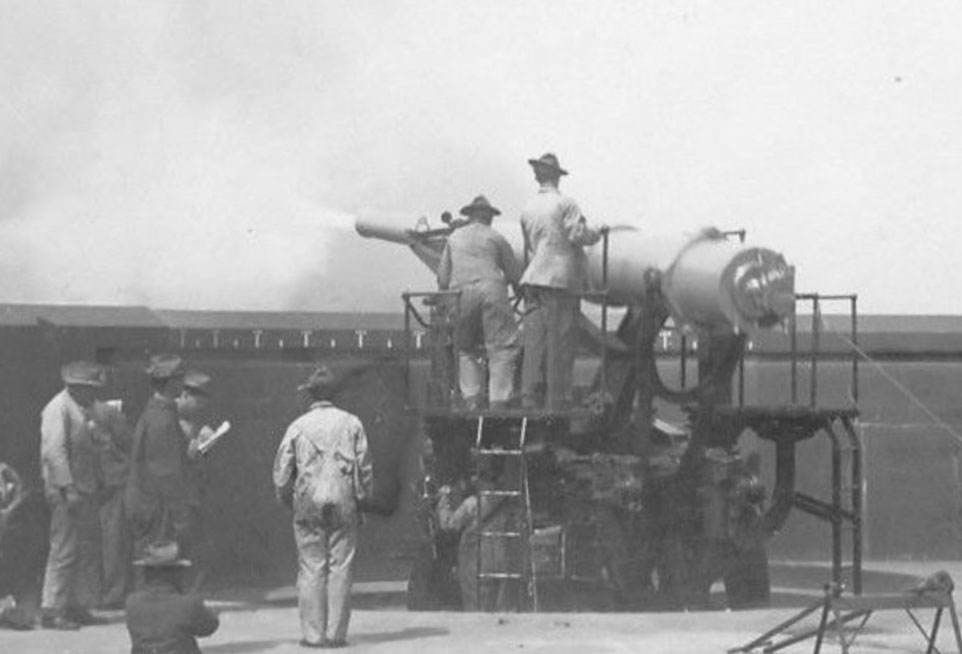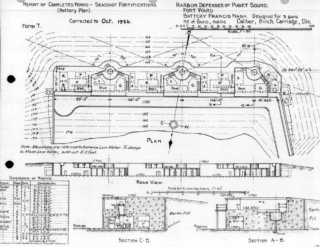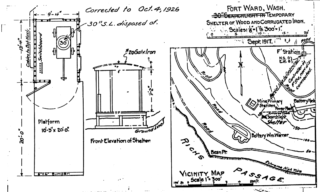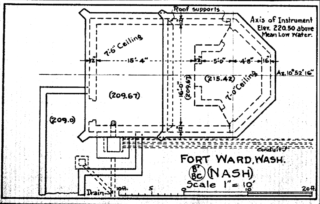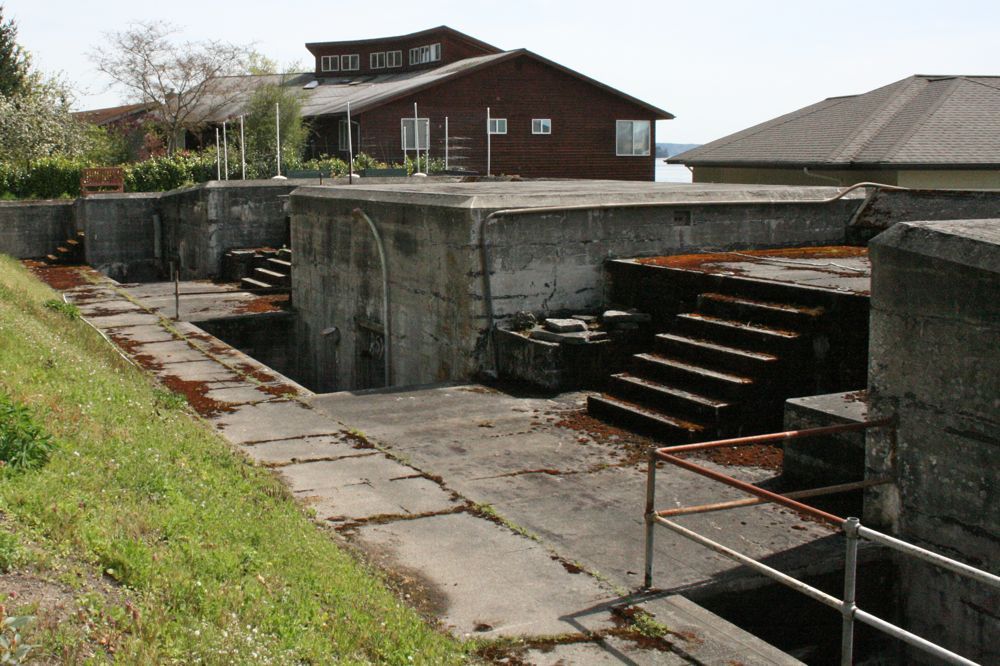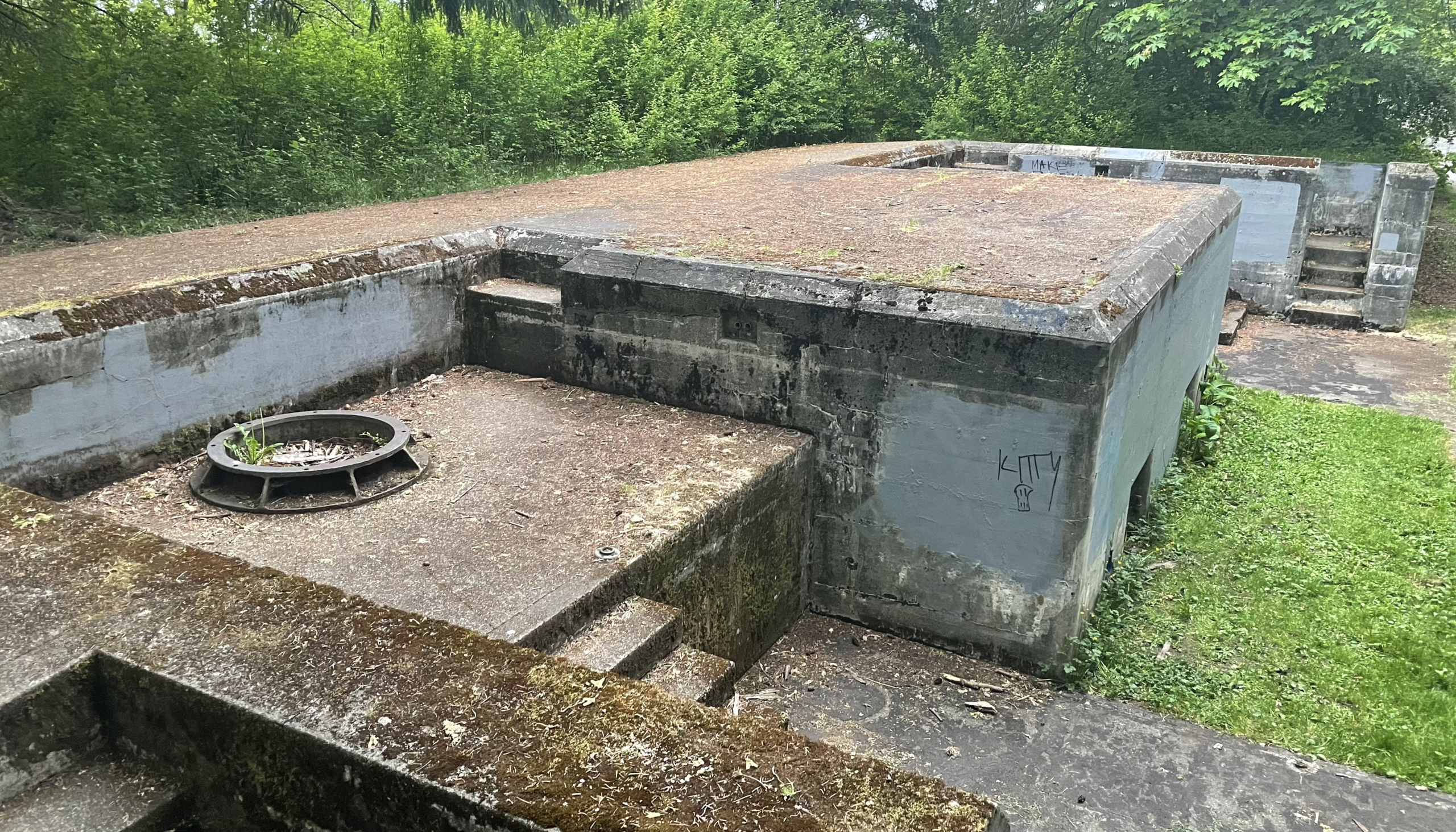To ward off the threat of invading armadas and protect the Rich Passage mine field, Fort Ward saw construction of four shore batteries. The largest, Battery Francis Nash, boasted three 8-inch “disappearing guns” that were the latest military technology – they popped up to fire, and then were pushed back down out of sight of the enemy by the recoil of firing.
Three smaller batteries – Thornburgh, Vinton and Warner, also named for military heroes of earlier campaigns – dotted the Rich Passage shoreline. These batteries featured 5-inch and rapid-fire 3-inch guns on parapet mounts that could bring fire to bear quickly against passing ships. The concrete batteries were two-story affairs with their guns mounted on the upper level, and ammunition magazines and bombproof redoubts below for protection.
All of Fort Ward’s big guns were removed by 1926, to be deployed on ships or in theaters of war overseas or simply scrapped as more modern (and lethal) armaments were introduced. Batteries Thornburgh and Vinton can be explored within Fort Ward Park, while Warner and Nash are on private land.

One of Fort Ward’s three 8-inch guns was manufactured at the famous Watervliet Arsenal in Watervliet, N.Y. Known as “America’s cannon factory,” the arsenal was founded during the war of 1812.
The battery on the bluff: Francis Nash
Armament size at Coast Artillery Corps batteries was determined by the range of open water a given battery would have to command. Battery Francis Nash was built for three 8-inch guns – relatively small weapons, compared to the larger 10-inch and 12-inch rifles at the “Triangle of Fire” forts (Worden, Casey and Flagler) that defended the broad expanse of water where the Strait of Juan de Fuca elbowed south into Puget Sound.
The battery’s easternmost and middle guns were oriented toward the waters south of the island, their carriages traversing 140-degree fields of fire. The westernmost gun afforded a 180-degree field of fire, to follow the path of enemy vessels turning north into Rich Passage.
Battery construction began: 1900; completed: 1901
Armament installed: April 1903; removed: Oct. 1917
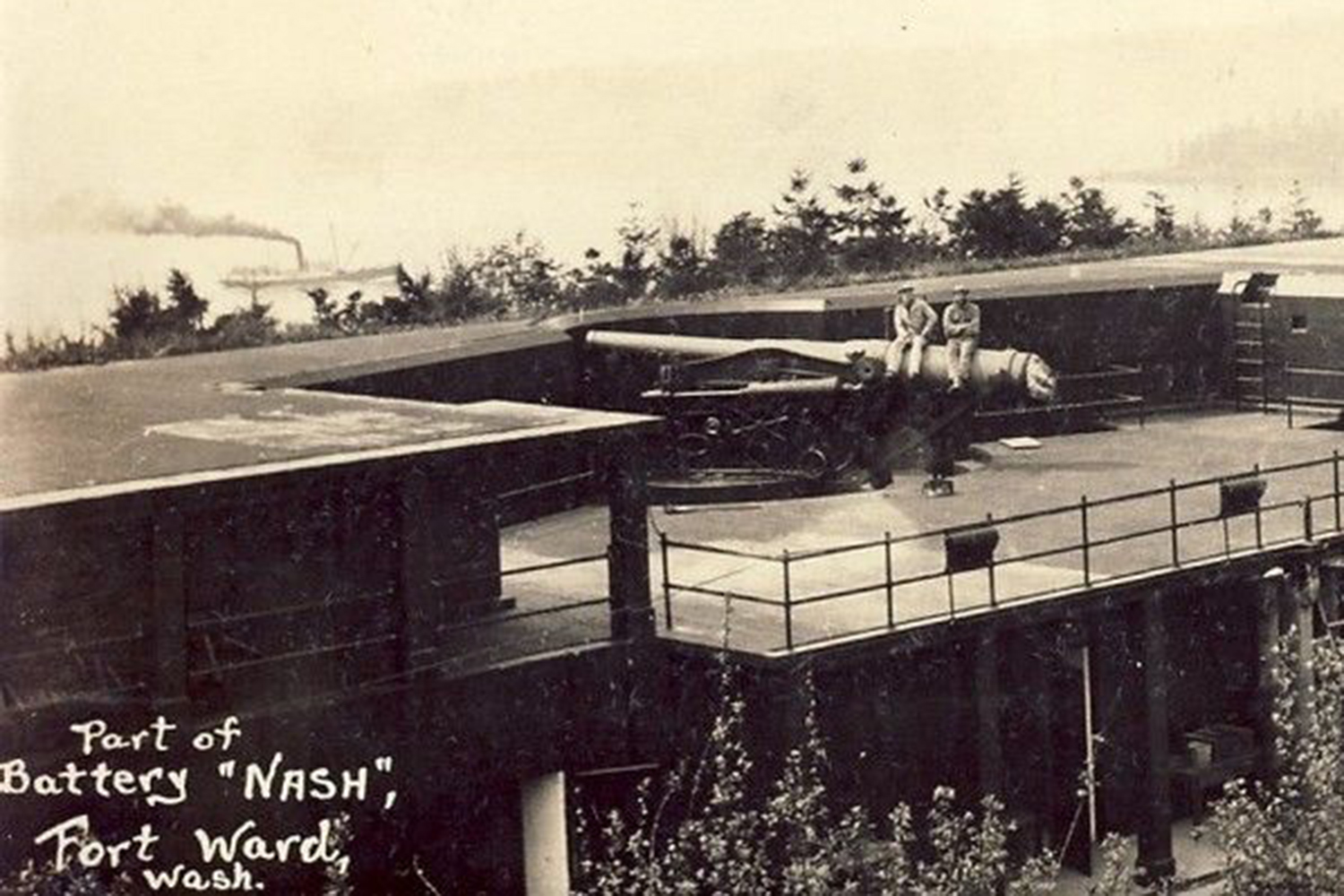
Battery Nash was a self-contained installation, with chambers for ammunition, stores and a power station below the gun platforms, a switchboard communications system, and storm drainage and sanitation. Fire was directed from a fire control station farther up the hillside. No period photographs of the fire control station are known to exist, and a private home was built atop the site in the 1990s.
The shore batteries
Three smaller batteries – Thornburgh, Vinton and Warner, also named for military heroes of earlier campaigns – dotted the Rich Passage shoreline. These batteries featured 5-inch and rapid-fire 3-inch guns on “parapet” mounts that could bring fire to bear quickly against passing ships. The concrete batteries were two-story affairs with their guns mounted on the upper level, and ammunition magazines and bombproof shelters below for protection. These smaller guns did not require spotters – they were “point and fire.”
Battery Warner
Battery Warner was armed with two 5-inch guns to command the broad expanse at the entrance to Rich Passage. No historic photographs of Battery Warner are known to exist. The images of the 5-inch guns are representative. The remains of the battery are behind a fence on South Beach Drive, just south of the South Beach Condominiums.
Battery construction began: 1900; completed: Jan. 1904
Armament installed: Oct. 1907; removed: Oct. 1917; reinstalled: March 1919; removed: June 1926
Battery Vinton
Battery Vinton was armed with two 3-inch guns where Rich Passage narrowed and shorter-range guns sufficed. The battery can be explored in Fort Ward Park near the lawn. No historic photographs of Battery Warner are known to exist. The 3-inch gun shown is at Fort Flagler on Marrowstone Island.
Battery construction began: 1900; completed: Oct. 1903
Armament installed: Aug. 1904; removed: July 1920
Battery Thornburgh
Fort Ward’s last line of defense, Battery Thornburgh brought four 3-inch guns to bear from the hillside overlooking Rich Passage. The battery can be explored in Fort Ward Park, just up the hill trail from the main entrance. No historic photographs of Battery Thornburgh are known to exist. The 3-inch gun shown is representative, and can be seen at Fort Casey on Whidbey Island.
Battery construction began: 1900; completed: Oct. 1903
Armament installed: Aug. 1904; removed: July 1920
